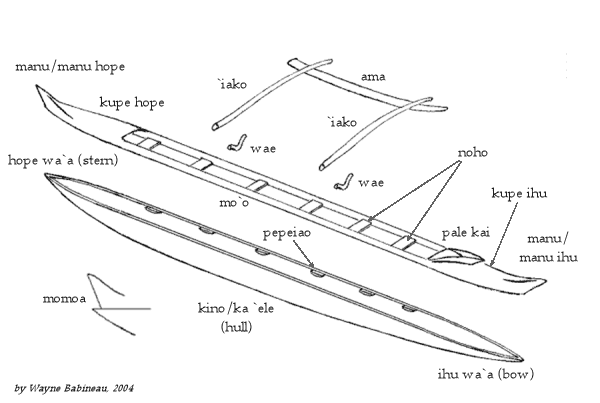|
Paddling with Keahiakahoe Canoe Club
Information for New Paddlers
How to join
We welcome you to join us. If you're interested in paddling with Keahiakahoe, or in trying outrigger canoe paddling before you make a commitment, come down to the site at any scheduled practice time and talk to a coach. The only pre-requisites are that you can swim and that you fill out a current HCRA Insurance waiver. If you're are under 18 complete the form for minors and have your parents sign it as well.
If you decide to join Keahiakahoe, you'll need to complete an application form and pay the annual dues. Turn in the completed application, your dues payment and current HCRA waiver form to a Keahiakahoe officer or committee member. Club dues are $200 per Adult and $180 per Youth. You'll receive a Keahiakahoe racing jersey when your dues are paid in full.
If you're new to the sport, you don't have to buy a paddle right away. We have practice paddles you can use. If you decide outrigger paddling is a sport you want to pursue, we'll give you advice on how to choose the right paddle.
Registration
Registration information can be found and downloaded here.
What to wear
Wear something you don't mind getting wet, such as board or paddling shorts, t-shirt or tank top, and rubber slippers to wear outside the canoe. For daytime practice you should use sunscreen, and consider wearing a hat and long-sleeved shirt. For all practices we suggest you bring your own water or sports drink.
There is a cold-water shower at the site so you can rinse off after practice. Most paddlers carry extra towels in their vehicles to dry up after a nice cold shower.
Location
Our main practice site is located at Kahalu’u Beach Park on the ocean side of Waihe’e bridge. If traveling along Kahekili highway toward Kualoa, just past the intersection with Kahamehameha highway, you’ll cross Waihe’e bridge and we are located on the right hand side. Our satellite practice site for the masters and women is located down Sand Island Access Road. After crossing the Sand Island bridge, take the first right at the light. We are located on the waterfront just in front of the bathrooms. At both sites, you can park in the immediate areas but not in the trailer parking.

The Hawaiian Outrigger Canoe
The outrigger canoe has been central to the development of Hawaiian culture. So important was the canoe that the building of a new canoe was a significant event involving most of the members of a village: priests, craftsmen, laborers, helpers. From choosing the right tree to launching the new canoe, each step in the process had to be done correctly with the proper ritual and respect to preserve the life of the tree in the canoe and create a canoe that would, in turn, sustain the lives of those who used it.
In Hawaiian tradition each canoe is a living entity, with its own spiritual power or mana. We entrust our lives to our canoes and we treat them with respect.
The open-ocean conditions surrounding our islands led to the development of an outrigger canoe different from those of other Pacific islanders. The Hawaiian outrigger is relatively unadorned, with fore and aft hull covers (kupe) and a splashguard (pale kai) to cope with ocean waves and chop.
Although outriggers now are raced throughout Polynesia, outrigger canoe racing, ancient and modern, seems to have originated in Hawai`i. There are records of ancient Hawaiians racing for fun and for wagers, sometimes including life.
Today's HCRA-approved racing canoes are standardized in length and weight to allow both an observance of tradition and a level playing field. To race in HCRA-sanctioned events, canoes must weigh a minimum of 400 pounds without `iako, ama, or seat covers, and can be no longer than 45 feet. While most associations in the Islands, including ours, allow clubs to race fiberglass canoes, at the annual Hawai`i State Championship Regatta all crews must race in koa canoes.
All rights reserved Keahiakahoe Canoe Club 1995-2025
|